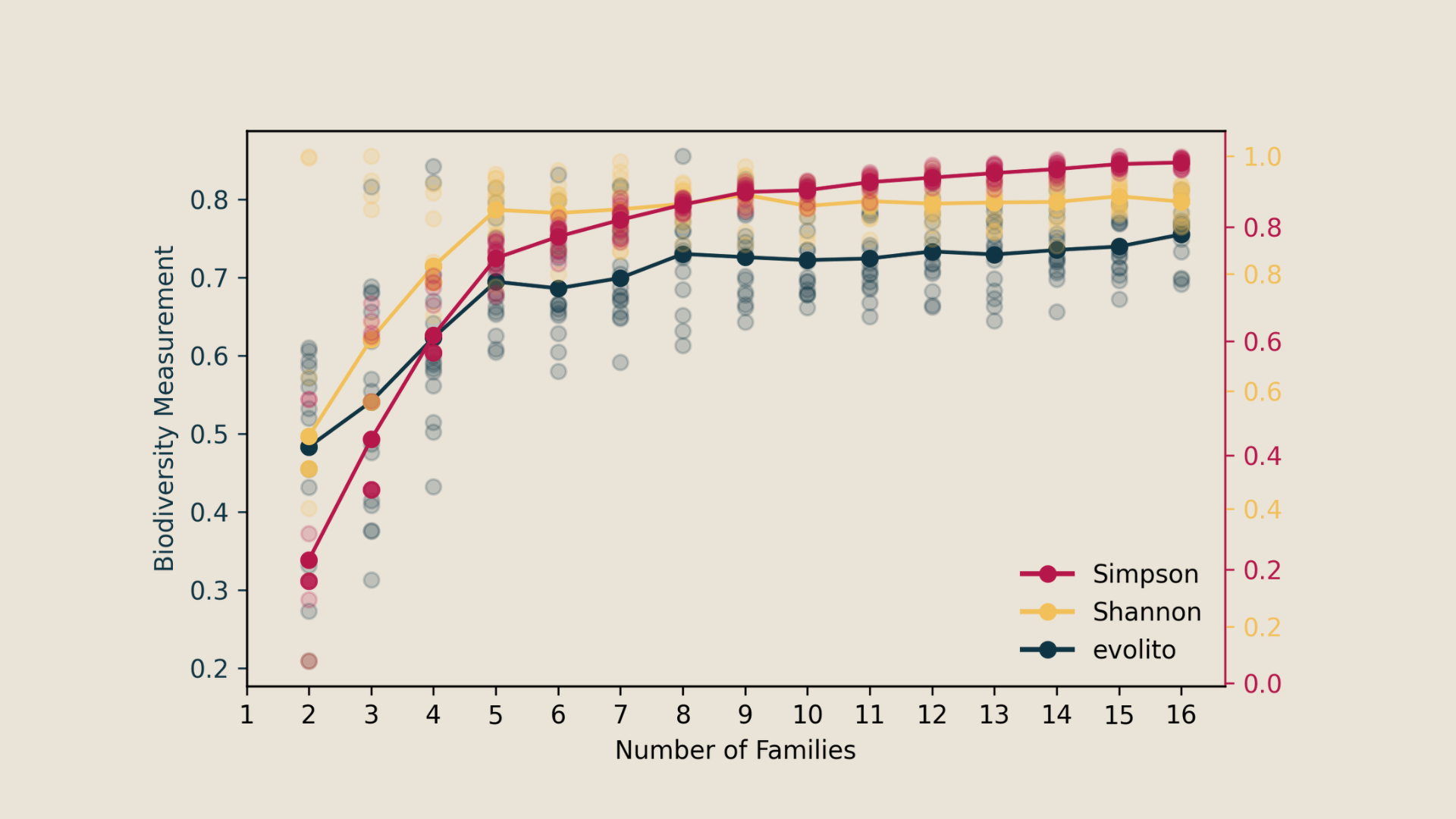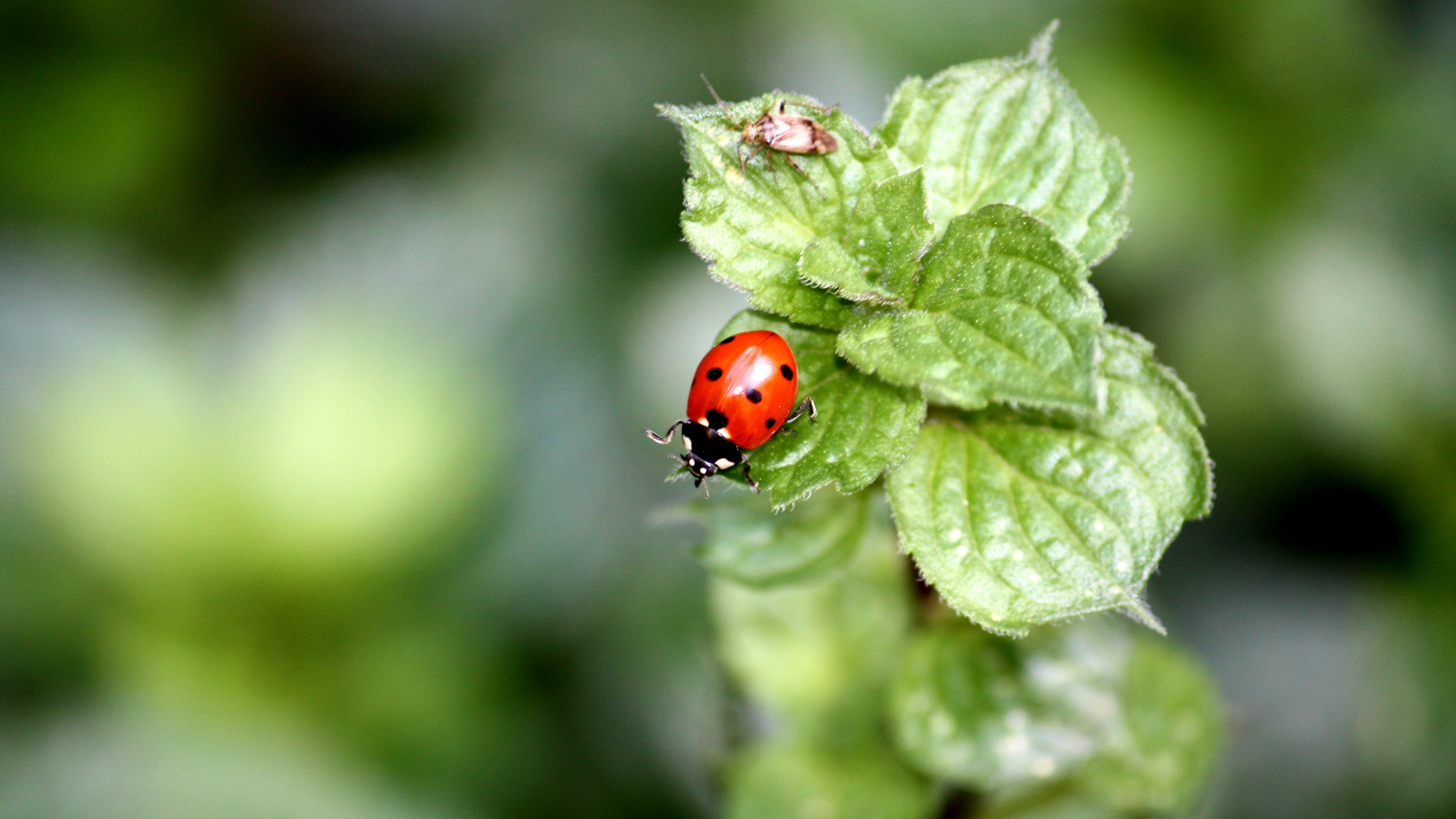Balance is nature’s superpower
When ecosystems are balanced, they thrive. Forests recover from storms, grasslands bounce back after drought, and wetlands keep water clean. But when one group dominates, systems weaken. Balance, with many species sharing roles, is what gives ecosystems resilience.
This is biodiversity: not just the number of species, but how evenly life is spread. That balance keeps food secure, climates stable, and communities healthy. For decades, ecologists have relied on statistical measures like the Shannon and Simpson indices to describe this balance. But those measures are often based on slow, manual data collection. The challenge has been finding a way to measure biodiversity balance continuously, at scale.
Our research aim
evolito’s solution records the wingbeat frequency of insects. Insects are a powerful proxy for ecosystem health because they react quickly to environmental change and underpin key environmental functions like pollination, nutrient cycling, and food webs.
Our AI/ML data cloud processes the wingbeat frequency and transforms it into key metrics: insect activity, abundance, diversity, and biomass. Previous research has already validated insect abundance and biomass against malaise traps. The next question was: can the evolito diversity index, based on insect wingbeat data, stand shoulder to shoulder with the ecological metrics scientists have trusted for decades?
The research objectives were simple:
- Measure whether the index increases when insect communities are balanced and rich in families.
- Check if it falls when a single family dominates.
- Compare correlations with Shannon and Simpson indices, which are widely accepted in ecology.
How we tested it
- We built a library of wingbeat data from 16 insect families.
- We simulated different communities: some balanced, some dominated by one family.
- For each simulation, we calculated three indices: Shannon evenness, Simpson diversity, and the evolito diversity.
- We compared how they behaved across all scenarios.
What we found

Strong alignment with known metrics
The evolito diversity index correlated closely with Shannon evenness (ρ = 0.82) and Simpson diversity (ρ = 0.84). This means it captures biodiversity balance in the same way trusted metrics do.
Richness matters
When families were evenly present, the index rose steadily as more were added.
Dominance detected
With one family making up 70% of the community, the index stayed low, even with others present.
Quick to respond
When the balance tipped, the index dropped alongside Shannon and Simpson.
This research shows that the evolito diversity index is a reliable way to measure biodiversity balance continuously.
- It behaves like trusted ecological metrics.
- It works directly on sensor data, removing the need for manual sample sorting.
- It turns biodiversity from an occasional snapshot into a continuous signal of ecosystem health.
What this means in practice
The validation of the evolito diversity index empowers organizations with science-based data they can use to:
- Strengthen compliance and secure their license to operate
- Validate sustainable practices with measurable evidence
- Build trust and transparency with stakeholders
- Demonstrate credible environmental stewardship
From research to action
The evolito diversity index turns biodiversity into a measurable, decision-ready metric, helping us act faster and smarter for a stable, nature-positive future.
To read the full research, click below.








